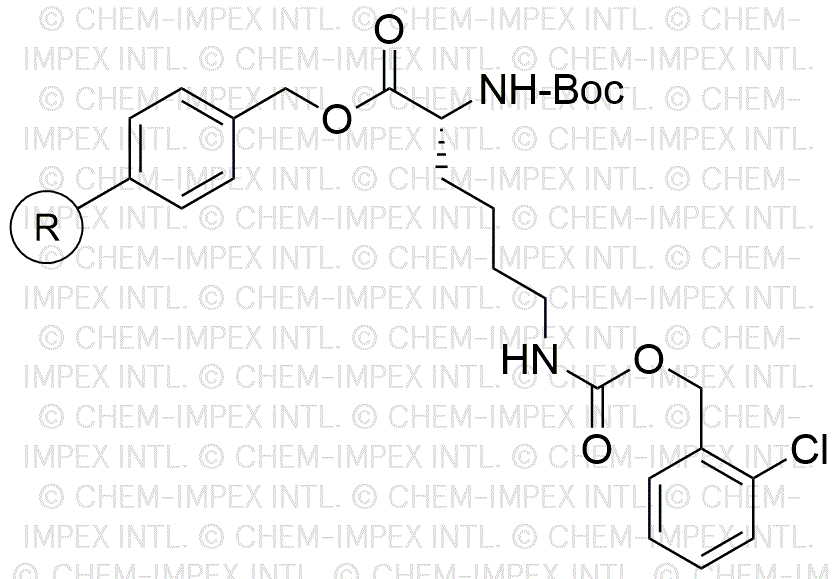Na-Boc-Ne-2-chloro-Z-D-lysine Merrifield is widely utilized in research focused on:
- Peptide Synthesis: This compound serves as a key building block in the synthesis of peptides, enabling researchers to create complex structures for drug development.
- Drug Development: Its unique properties make it valuable in medicinal chemistry for designing new pharmaceuticals, particularly those targeting specific biological pathways.
- Bioconjugation: The compound is used to modify biomolecules, enhancing their stability and functionality, which is crucial in developing targeted therapies.
- Protein Engineering: It aids in the design of modified proteins with enhanced properties, allowing for advancements in biotechnology and therapeutic applications.
- Research in Neuroscience: This chemical can be instrumental in studying neurotransmitter systems, providing insights into neurological disorders and potential treatments.
General Information
Properties
Safety and Regulations
Applications
Na-Boc-Ne-2-chloro-Z-D-lysine Merrifield is widely utilized in research focused on:
- Peptide Synthesis: This compound serves as a key building block in the synthesis of peptides, enabling researchers to create complex structures for drug development.
- Drug Development: Its unique properties make it valuable in medicinal chemistry for designing new pharmaceuticals, particularly those targeting specific biological pathways.
- Bioconjugation: The compound is used to modify biomolecules, enhancing their stability and functionality, which is crucial in developing targeted therapies.
- Protein Engineering: It aids in the design of modified proteins with enhanced properties, allowing for advancements in biotechnology and therapeutic applications.
- Research in Neuroscience: This chemical can be instrumental in studying neurotransmitter systems, providing insights into neurological disorders and potential treatments.
Documents
Safety Data Sheets (SDS)
The SDS provides comprehensive safety information on handling, storage, and disposal of the product.
Product Specification (PS)
The PS provides a comprehensive breakdown of the product’s properties, including chemical composition, physical state, purity, and storage requirements. It also details acceptable quality ranges and the product's intended applications.
Certificates of Analysis (COA)
Search for Certificates of Analysis (COA) by entering the products Lot Number. Lot and Batch Numbers can be found on a product’s label following the words ‘Lot’ or ‘Batch’.
*Catalog Number
*Lot Number
Certificates Of Origin (COO)
This COO confirms the country where the product was manufactured, and also details the materials and components used in it and whether it is derived from natural, synthetic, or other specific sources. This certificate may be required for customs, trade, and regulatory compliance.
*Catalog Number
*Lot Number
Safety Data Sheets (SDS)
The SDS provides comprehensive safety information on handling, storage, and disposal of the product.
DownloadProduct Specification (PS)
The PS provides a comprehensive breakdown of the product’s properties, including chemical composition, physical state, purity, and storage requirements. It also details acceptable quality ranges and the product's intended applications.
DownloadCertificates of Analysis (COA)
Search for Certificates of Analysis (COA) by entering the products Lot Number. Lot and Batch Numbers can be found on a product’s label following the words ‘Lot’ or ‘Batch’.
*Catalog Number
*Lot Number
Certificates Of Origin (COO)
This COO confirms the country where the product was manufactured, and also details the materials and components used in it and whether it is derived from natural, synthetic, or other specific sources. This certificate may be required for customs, trade, and regulatory compliance.


